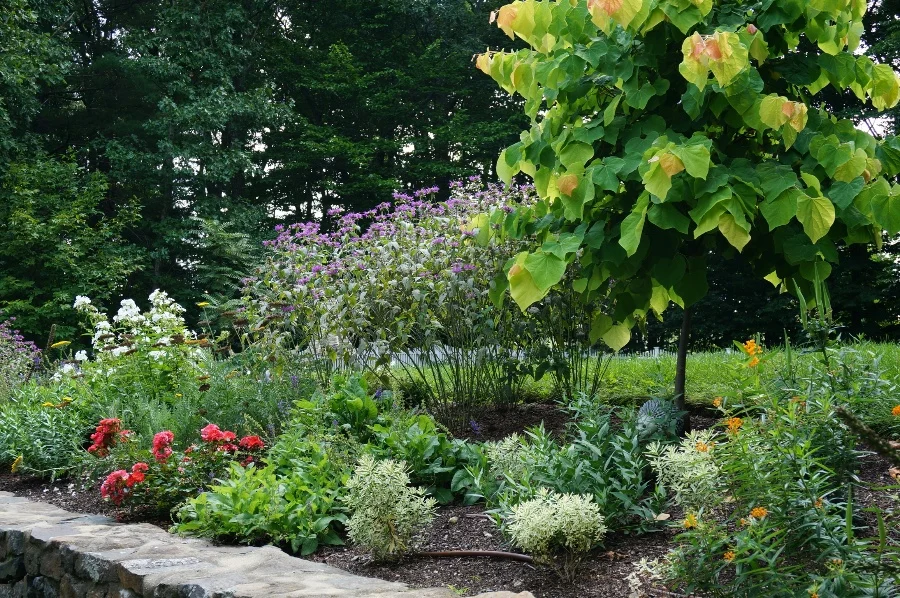As a nature enthusiast and avid gardener, I have always been captivated by the beauty of nature. The lush greenery, vibrant flowers, and tranquil surroundings have a way of soothing the soul. But as I delved deeper into the world of gardening, I realised that there is much more to landscaping than just aesthetics. Sustainable landscaping, in particular, has emerged as a crucial aspect of preserving the beauty of nature for future generations.
The importance of landscape maintenance for sustainability
Sustainable landscaping goes beyond simply creating a visually appealing outdoor space. It involves designing, installing, and maintaining landscapes in a way that minimises negative impacts on the environment and promotes biodiversity. Landscape maintenance plays a vital role in achieving these goals.
Regular maintenance tasks such as mowing, pruning, and weeding help ensure that the landscape remains healthy and well-manicured. By keeping the vegetation in check, we prevent the spread of invasive species, allowing native plants to thrive. This, in turn, promotes biodiversity and supports local ecosystems.
Benefits of sustainable landscaping
Sustainable landscaping offers a myriad of benefits, both for the environment and for us as individuals. One of the key advantages is water conservation. By incorporating water-efficient irrigation systems, mulching, and proper soil management techniques, we can significantly reduce water consumption in our landscapes. This not only helps conserve this precious resource but also lowers our water bills.
Another benefit of sustainable landscaping is improved air quality. By using native plants and trees, we can create green spaces that act as natural air purifiers. These plants absorb carbon dioxide and release oxygen, helping to mitigate the effects of climate change and create a healthier living environment.
Common landscape maintenance tasks
To ensure the sustainability of our landscapes, it is important to stay on top of regular maintenance tasks. These tasks may vary depending on the specific needs of your landscape, but some common ones include:
- Mowing: Regular mowing helps maintain a neat and tidy appearance, prevents the growth of weeds, and promotes healthy grass growth.
- Pruning: Pruning trees and shrubs not only enhances their aesthetic appeal but also removes dead or diseased branches, improving their overall health and longevity.
- Weeding: Regular weeding prevents the spread of invasive plant species and allows desirable plants to thrive.
- Mulching: Applying a layer of organic mulch around plants helps conserve moisture, suppress weeds, and improve soil fertility.
- Fertilising: Properly timed and balanced fertilisation can provide essential nutrients to plants, promoting healthy growth and bloom.
- Pest control: Utilising organic and eco-friendly pest control methods helps protect plants from harmful insects while minimising harm to beneficial ones.
Water conservation in landscaping
Water is a precious resource, and conserving it is crucial for sustainable landscaping. There are several strategies we can employ to minimise water usage in our landscapes:
- Irrigation systems: Install water-efficient irrigation systems such as drip irrigation or smart controllers that adjust watering based on weather conditions.
- Rainwater harvesting: Collect rainwater in barrels or cisterns and use it for watering plants during dry periods.
- Xeriscaping: Choose drought-tolerant plants and design your landscape in a way that minimises the need for supplemental irrigation.
- Proper watering techniques: Water deeply and infrequently to encourage deep root growth and reduce water evaporation.
By implementing these water conservation methods, we can reduce our water footprint while still maintaining beautiful and sustainable landscapes.
Organic and eco-friendly pest control methods
Pests can wreak havoc on our landscapes, but using harmful chemical pesticides is not the solution. Fortunately, there are several organic and eco-friendly pest control methods that are effective and safe for the environment. Here are a few examples:
- Biological control: Introduce natural predators or parasites that feed on pests to keep their populations in check.
- Companion planting: Planting certain species together can repel pests or attract beneficial insects that prey on pests.
- Manual control: Handpicking pests or using traps can be an effective way to control their numbers without resorting to chemicals.
- Organic insecticides: Use organic insecticides derived from natural sources such as neem oil or insecticidal soaps, which have minimal impact on the environment.
By adopting these organic pest control methods, we can protect our landscapes from pests while preserving the delicate balance of nature.
Native plants and their role in sustainable landscaping
Native plants are a cornerstone of sustainable landscaping. These are plants that naturally occur in a specific region and have adapted to its climate, soil conditions, and wildlife. Incorporating native plants into our landscapes offers numerous benefits:
- Biodiversity: Native plants provide essential habitat and food sources for local wildlife such as birds, butterflies, and bees, promoting biodiversity.
- Low maintenance: Native plants are well-adapted to the local environment, requiring less water, fertilizer, and pesticide inputs.
- Resilience: Native plants have evolved to withstand local climate conditions and are often more resistant to pests and diseases.
- Preservation of local ecosystems: By planting native species, we contribute to the preservation of local ecosystems and help prevent the displacement of native flora and fauna by invasive species.
Including a variety of native plants in our landscapes not only enhances their beauty but also contributes to the overall sustainability of our environment.
Seasonal landscape maintenance tips
Proper landscape maintenance varies with the changing seasons. Here are some seasonal tips to keep your landscape looking its best:
Spring: In spring, focus on fertilising, pruning, and planting. Remove any dead or damaged branches, apply a slow-release fertiliser, and plant new additions to your landscape.
Summer: Summer is the time for regular watering and pest control. Water deeply and early in the morning to reduce evaporation, and keep an eye out for pests and diseases.
Autumn: As the leaves start to fall, make sure to rake and compost them. Aerate the soil, overseed the lawn if necessary, and prepare your landscape for the upcoming winter.
Winter: Winter is a time of dormancy, but there are still maintenance tasks to be done. Prune dormant trees and shrubs, protect delicate plants from frost, and plan for future landscape improvements.
By following these seasonal maintenance tips, you can ensure that your landscape remains healthy and vibrant throughout the year.
Hiring professional landscape maintenance services
While some landscape maintenance tasks can be done by homeowners, there are instances where hiring professional services becomes necessary. Professional landscape maintenance companies have the expertise and equipment to handle complex tasks and ensure the long-term sustainability of your landscape.
When choosing a professional service, consider their experience, credentials, and commitment to sustainable practices. Look for companies that use organic and eco-friendly methods, prioritise water conservation, and have a deep understanding of native plants and their role in sustainable landscaping.
Conclusion: Taking responsibility for preserving the beauty of nature
As responsible stewards of the environment, it is our duty to preserve the beauty of nature for future generations. Sustainable landscaping, with its focus on minimising environmental impact and promoting biodiversity, plays a crucial role in achieving this goal. By embracing landscape maintenance practices that prioritise water conservation, organic pest control, and the use of native plants, we can create outdoor spaces that are not only visually appealing but also environmentally sustainable.
So, let us take up the challenge and make a difference. Whether you are a homeowner, a gardener, or a landscape professional, let us come together and ensure that our landscapes are not just beautiful but also sustainable. By doing so, we can preserve the beauty of nature and create a greener, healthier future for all.













